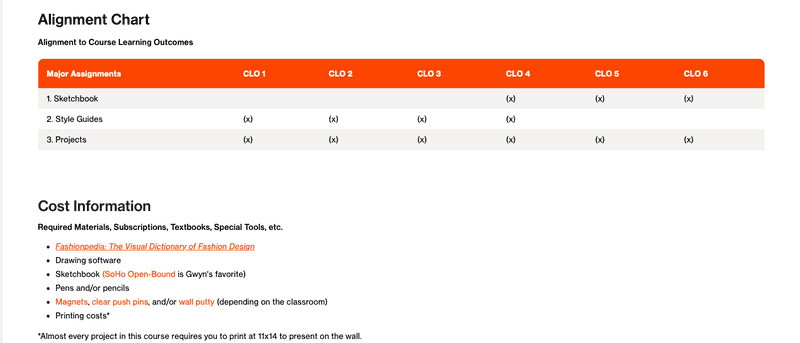Case Study — Moving SWAU to a Modern, Dynamic Digital Catalog


Transitioning your institution’s syllabi into a digital publication can be a daunting undertaking, particularly for institutions where faculty, administrators, and students all use different platforms to access or publish course information. For ArtCenter College of Design, the challenge was clear: syllabi were spread across multiple formats and locations, creating duplication, inefficiency, and inconsistency across publications. By partnering with Clean Catalog, ArtCenter implemented a custom LTI integration within Canvas that simplified syllabus creation, improved collaboration, and established a secure historical record.
Before Clean Catalog, ArtCenter’s faculty often entered the same course details in several different systems, creating unnecessary duplication and opportunities for human error. Editing required piecing together information from scattered sources and relied on time-consuming back-and-forth communication. Students faced their own frustrations with no single, reliable place to find the most up-to-date syllabus for their courses.
Record-keeping was another major concern. With syllabi stored in a variety of formats and locations, the college struggled to maintain a consistent archive for accreditation and compliance. ArtCenter needed a solution that streamlined faculty workflows, gave administrators greater visibility, and provided students with dependable access, all while preserving syllabi as permanent historical records.
Clean Catalog’s solution was a fully embedded LTI integration inside Canvas. When instructors log into their courses within Canvas, they now see a Clean Catalog menu item that automatically generates a syllabus pre-populated with course details pulled directly from the Student Information System, such as course name, credits, schedule, and description. This eliminates repetitive data entry and ensures consistency across the board.
Faculty can then edit and build out their syllabi at their own pace, saving drafts until they’re ready to publish. Co-instructors have the ability to collaborate on these documents, reducing the back-and-forth editing that often comes with multi-instructor courses. Once published, syllabi are instantly available to students in the same Canvas location where they already access their coursework.
For administrators, the new user interface has been just as transformative. Deans and department chairs can review syllabi directly, leave feedback for staff, and request edits if needed. At the end of each semester, syllabi are locked, creating a secure archive that both satisfies accreditation requirements and preserves institutional history. This automatic archiving ensures that ArtCenter will retain a comprehensive history of syllabi without adding extra work for faculty or staff.
 Screenshot of a templated syllabus form integrated within Canvas.
Screenshot of a templated syllabus form integrated within Canvas.
Through this collaboration, ArtCenter gained a syllabus system that is accurate, efficient, and fully aligned with their institution’s needs. Instructors save time by avoiding duplicate data entry, while administrators benefit from a centralized review and approval process. Students know exactly where to find their syllabi—no digging through emails or outdated platforms required.
 Part of a templated syllabus within Canvas — this is the view a student would see.
Part of a templated syllabus within Canvas — this is the view a student would see.
Most importantly, the end-of-term locking feature has provided ArtCenter with the permanent, accessible archive it was missing. This record supports compliance, protects institutional knowledge, and ensures that the college can always look back on its academic history with confidence. During accreditation reviews, their staff will be able to easily refer to past syllabi and link those repositories within their accreditation applications.
Since implementing Clean Catalog, ArtCenter has experienced meaningful improvements across the board. Faculty and administrators now work together with fewer obstacles, students know exactly where to find accurate syllabi, and the college benefits from a clear, dependable process for managing course information. What started as a software upgrade has become a campus-wide shift toward greater efficiency, transparency, and accessibility.
If your institution is interested in learning more about Clean Catalog’s Syllabus Management Software or would like to schedule a demo, don’t hesitate to reach out to us today.